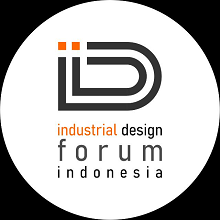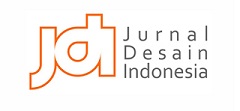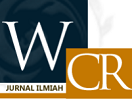ANALISIS KEBUTUHAN PERANCANGAN PICTURE BOOK AUGEMENTED REALITY PENGENALAN PARTUTURAN BATAK TOBA
Abstract
The Toba Batak ethnicity has a kinship system that becomes their cultural identity and way of life, known as Dalihan Na Tolu. Every Toba Batak needs to know two kinship systems in this philosophy: Tarombo Batak and Partuturan. After conducting research, it found that Toba Batak parents tend to teach Partuturan to their children as a basis they must know before exploring Dalihan Na Tolu. However, the Partuturan can be complicated for children to understand because it has many complex classifications. On the other hand, using verbal and observation to introduce this culture is also a problem that makes it more difficult for children to understand the Partuturan. This study aims analyze the method of introducing Partuturan using picture books and augmented reality. The methodology is mix-method in the form of interview data, literature study, and questionnaires in the form of open-ended questions. The implications of this study can be helpful for other researchers in understanding the design process of Partururan for Batak Toba children to foster a solid cultural identity using picture books based on augmented reality.
Keywords
Full Text:
PDF (Bahasa Indonesia)References
Cheng, K.-H. (2017). Reading an augmented reality book: An exploration of learners’ cognitive load, motivation, and attitudes. Australasian Journal of Educational Technology.
Damarastuti, R. (2013). Komunikasi Antarbudaya: Konsep, Teori dan Aplikasi. Yogyakarta.
Danaei, D., Jamali, H. R., Mansourian, Y., & Rastegarpour, H. (2020). Comparing reading comprehension between children reading augmented reality and print storybooks. Computers & Education, 153, 103900.
Fahruddin, A. I., & Cahyono, A. (2022). Innovative Learning Arts and Culture during the Pandemic in Junior High School. Gelar : Jurnal Seni Budaya, 20(1), 9–13.
Kiryakova, G., Angelova, N., & Yordanova, L. (2018). The potential of augmented reality to transform education into Smart education. TEM Journal, 7(3), 556–565.
Latifatuz Zakiyah, N., & Masnuna. (2020). Buku Ilustrasi Pola Asuh yang Tepat untuk Menumbuhkan Emosi Positif Anak. Gunung Anyar.
Liono, R. A., Amanda, N., Pratiwi, A., & Gunawan, A. A. S. (2021). A Systematic Literature Review: Learning with Visual by The Help of Augmented Reality Helps Students Learn Better. Procedia Computer Science, 179, 144–152.
Martorell, G., Papalia, D. E., & Feldman, R. D. (2014). A Child’s World Infancy through Adolescence (Vol. 13). United States: McGraw-Hill Education.
Maru, M. G., Tulus, A., Dukut, E. M., Liando, N., Mangare, J. G., & Mamentu, A. C. (2018). Children’s Story Books: Introducing Cultural Hybridity, Shaping Intercultural Sensitivity for Foreign Language Young Learners (An Observation to Gramedia Books in 2017). Proceedings of the 1st International Conference on Social Sciences (ICSS 2018). Paris, France: Atlantis Press.
Narulita Sitompul, E. (2015). Berpesta Bona Taon Bersama Bonar & Tiar. Surabaya: Petra Press.
PUI, W. S. W., Heyi, Z., Ming, D., & Cai E, Z. (2020). Developing Children’s Cultural Identities Through Play. Beijing International Review of Education, 2(2), 244–257.
Salisbury, M. (2004). Illustrating Children’s Books: Creating Pictures for Publication (1st ed.). United States: Baron’s Educational Series,Inc.
Tambunan, E. H. (1982). Sekelumit mengenai Masyarakat Batak Toba dan Kebudayaannya sebagai Sarana Pembangunan (1st ed.). Bandung: Bandung Tarsito.
Voorhees, B., Read, D., & Gabora, L. (2020). Identity, kinship, and the evolution of cooperation. Current Anthropology, 61(2), 194–218.
DOI: http://dx.doi.org/10.22441/narada.2023.v10.i1.002
Refbacks
- There are currently no refbacks.
Fakultas Desain dan Seni Kreatif
Universitas Mercu Buana
Gedung E Lantai 4
Jl. Raya Meruya Selatan no.1, Kembangan, Jakarta 11650
Tlp./Fax: +62215871335
Journal International Standard Serial Number (ISSN) Registration:
The Journal is indexed by:
Tools for Citations & Plagiarism Detection:

Ciptaan disebarluaskan di bawah Lisensi Creative Commons Atribusi-NonKomersial 4.0 Internasional
 NARADA: Jurnal Desain dan Seni
NARADA: Jurnal Desain dan Seni

























